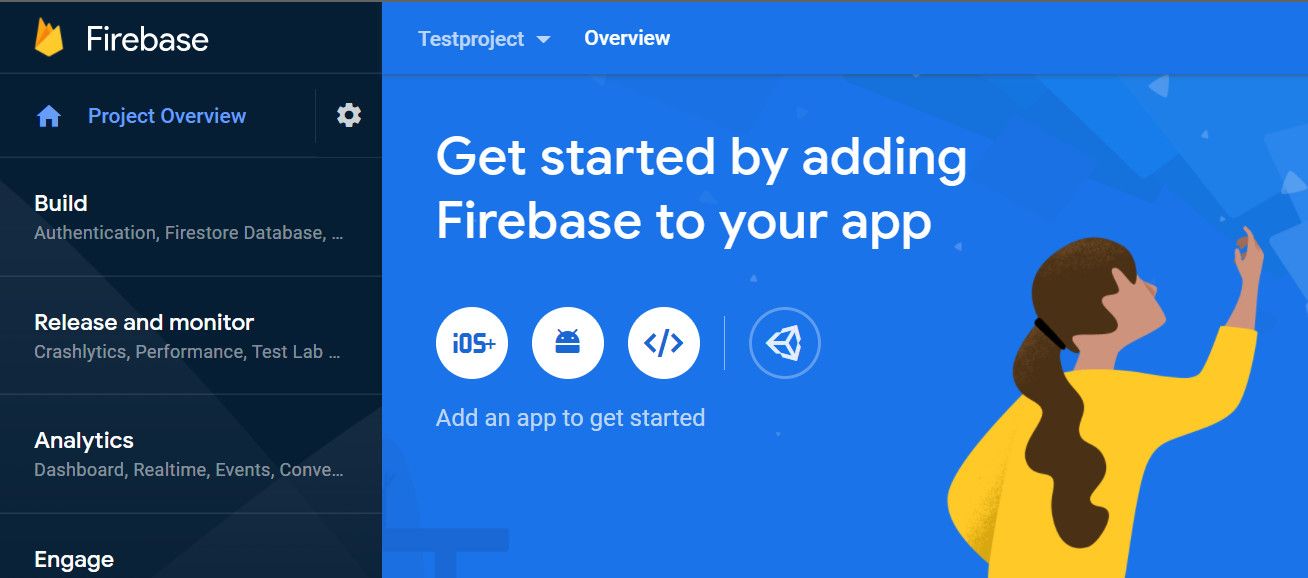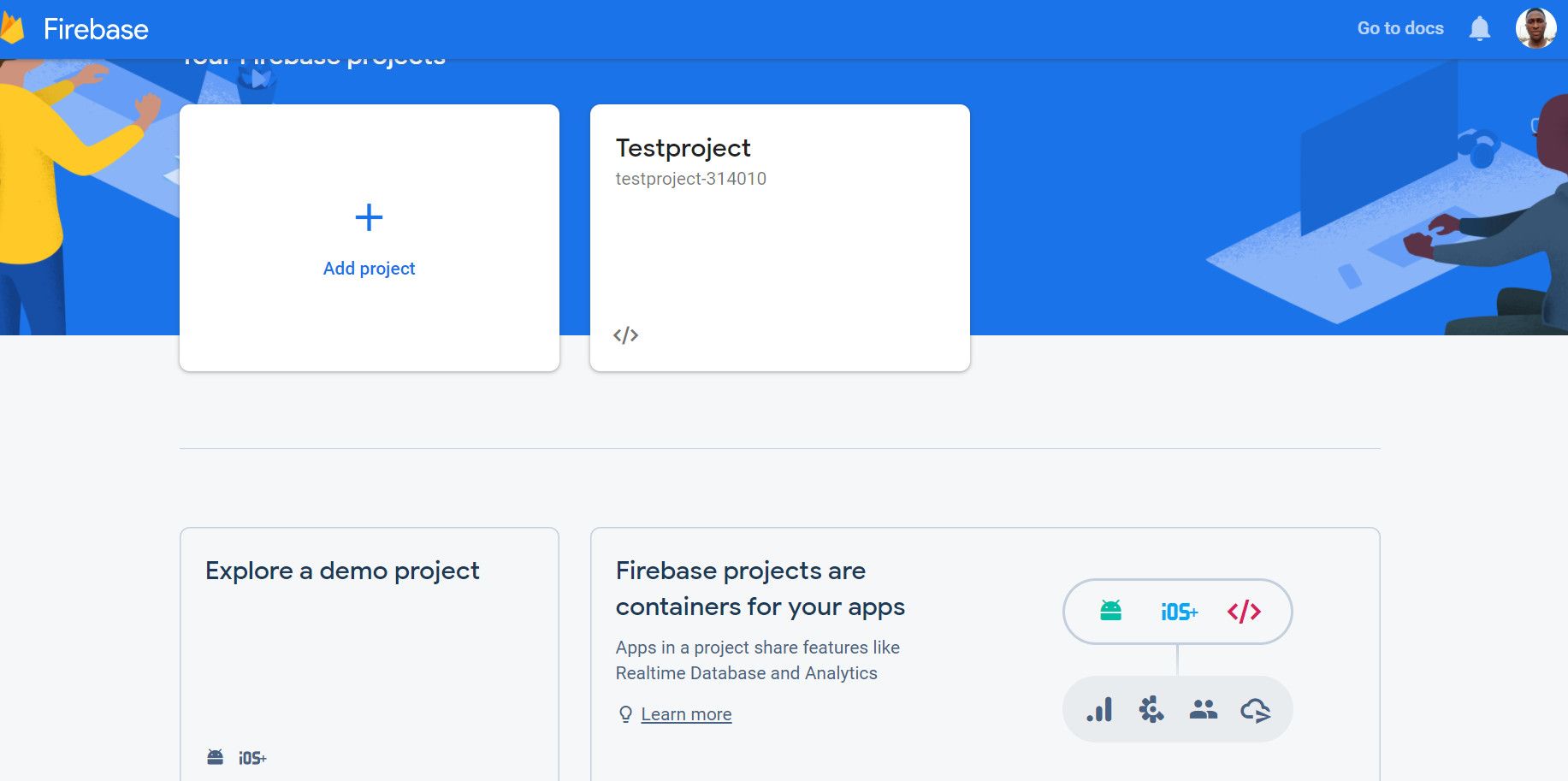Google Firebase offers many features that pitch it as the go-to backend development tool for web and mobile apps. It reduces development workload and time. And it's a perfect prototyping tool. Firebase is simple, lightweight, friendly, and industrially recognized.
Tired of writing boring code for your backend, or can't even write it at all? Try Google Firebase. So what's Google Firebase, and why should you build your app around it?
What Is Google Firebase?
Founded in 2011 as a chat API and acquired by Google in 2014, Google Firebase is a platform that now offers active backend as a service (BaaS) for building dynamic web and mobile apps.
Firebase concept is simple. When you build a client-side app with JavaScript or any of its frameworks, for instance, Google Firebase can turn this into a serverless app in no time. It also removes the need to manage databases yourself, as it does that for you.
Therefore, implementing Firebase means plugging a ready-made backend into your client code to make it dynamic. Ultimately, it eliminates the need to write backend code from scratch and gives you a fully functional one instead.
Security-wise, it also has explicitly built-in security rules that make it a trusted data and server handler. Plus, you get a protected backend when you use these rules.
Why Should You Use Google Firebase?
Indeed, Firebase is a less technical and time-saving alternative to writing full-fledged backend code for dynamic apps.
You might also want to consider leveraging this tool if you eventually wish to host and manage your app in the cloud. Being serverless, Firebase removes the need to worry about the technicalities of cloud server configuration.
As a Google Cloud service, it also gives you access to other Google products and features, like Google Drive and Sheets. For instance, you can import dummy data from Google Sheets and use it temporarily to serve your app.
With Firebase, it's pretty simple to connect and use built-in third-party authentication providers, including Google, Facebook, Twitter, among others. And if you want to use a pre-built authentication UI, you have it at your disposal as well.
All of these can save you a significant amount of development cost, as you don't need to pay as high as developing from scratch. Firebase pricing is equally flexible. Although there are pay-as-you-go services, you can start on a free plan and use primary features if your app is still at its prime.
Firebase is a good choice if you want to deploy a working product on the cloud rapidly. Plus, as mentioned, you might want to try it out if you need a backend but don't have a backend development background.
Cons of Google Firebase
There's hardly a technology without a drawback. So, while it's a rapid backend and server management option, Firebase may present some faults along the way:
- If not properly managed, the cost of maintaining Firebase on a pay-as-you-go service accumulates as reads and writes increase. So maintenance costs can spike at some points.
- It's hard to export data stored in Firestore into another database. Even if you eventually find a way, it often requires a high level of technicality. Plus, it can be quite costly, too.
- It can be less platform-agnostic, as it delves more towards Android than iOS.
- The larger the query result gets, the messier and slower things become.
How to Get Started With Google Firebase
You can start using Firebase as soon as you register and create a project on the Firebase platform. After that, you'll need to register your app with your project. And then install Firebase into your project root using the npm package:
npm install firebase
That's for getting started on your local machine, though. You'll need to follow a few more instructions as outlined in the Firebase setup docs to get going. When adding an app to a Firebase project, you'll get an initialization code for getting started.
That said, a project in Firebase is cloud-based. You can manage several apps inside a project. But resources are available on a per-project basis.
Firebase offers several functions. But like development modules, you can always import what you need to get the best performance. Say you've built a client-side app and want to add authentication and storage features. You can grab these by calling relevant Firebase APIs.
5 Useful Features of Google Firebase
Interestingly, the Firebase platform is multifaceted, offering build tools and APIs around database management, authentication, push notifications, cloud hosting, and more.
Let's see some of its key features below.
1. Storage
Google Firebase uses dedicated cloud-based NoSQL databases, Firestore, and a real-time database, to store information. Like other NoSQL databases, they save information in collections and documents.
Data querying doesn't depend on the amount of data stored in the database. Instead, it's complicated by the number of results the query brings.
One of the advantages of Cloud Firestore and the real-time database is that they use real-time listeners to update data across platforms. That way, clients get a snapshot of synchronized data even when there's network downtime. And when they resume online, it automatically updates the clients.
2. Hosting
You can also host your web app easily on Firebase. Offering microservices, Firebase lets you host and deploy your web app rapidly with a few commands. When you do so, your app sits on globally distributed content delivery networks (CDNs). This ensures that users can read and write to your app without downtime.
You get to add features to your app via remote commitment. So it's easy to update and scale your app in real-time without a glitch.
3. Authentication
One of the time-saving features that you want to explore in Firebase is its authentication service. When you link your app with Firebase, you might not need to create a separate login interface. To save time, you can use its built-in login UI to sign users into your app.
And for more flexibility, you can use the authentication SDK instead. This allows you to sign users in using several other authentication methods available.
4. Firebase ML
Firebase ML comes in handy if you have a machine learning project to deploy along with your app. Firebase offers machine learning capabilities for training models. Thus, it lets you integrate custom models into your app and host them in the cloud.
5. Built-In Push Notifications
Coding and implementing push notifications can be arduous. Firebase's built-in push notification lets you add personalized and real-time alert capabilities to your app without writing a separate script from scratch.
Simplify Your Workload With Firebase
With ease comes so much productivity. As you've seen, you can save a lot of time and eliminate latency with Google Firebase. While it's actively improving, Firebase powers many web apps and mobile apps on the internet already.
If you're in doubt or scared to try it out for a complex project, you might want to start with a smaller project and then scale later. Thankfully, you'll find some handy practicals in the docs to see how it works.



